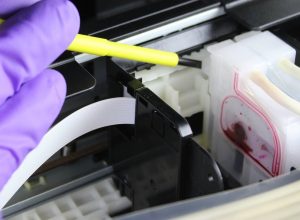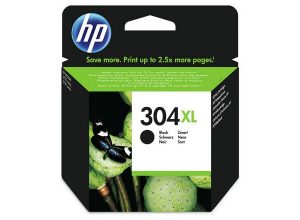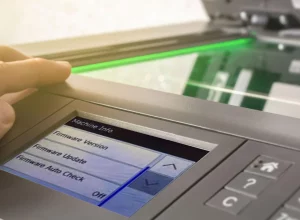Contents
Secrets to greener printing – Reduce your carbon footprint
In a world where sustainability and environmental protection have become major concerns, eco-friendly printing is an essential aspect to consider. Reducing the carbon footprint associated with our printing activities is not only good for our planet, it can also offer significant economic benefits. This article explores several strategies and practices for greening the printing process, including optimization techniques, material choices and recycling methods.
Understanding the carbon footprint of printing
The carbon footprint of printing includes all the greenhouse gas emissions generated by the printing process, from paper production to the energy consumption of printing equipment. For example, each sheet of paper produced and printed involves the use of natural resources, energy and logistical infrastructure. One study has shown that one tonne of A4 paper produced causes around 1.7 tonnes of CO2 emissions.
Choosing the right type of paper
Choosing the right paper is an essential first step to environmentally-friendly printing. Here are a few options to consider:
- Recycled paper: Opting for paper made from recycled fibers reduces the demand for new resources and the energy required to produce it.
- Ecologically certified paper: Seeking certifications such as FSC (Forest Stewardship Council) or PEFC (Programme for the Endorsement of Forest Certification) guarantees responsible sourcing of raw materials, thus contributing to the sustainability of forests.
Use environmentally-friendly inks
Conventional inks can contain harmful chemicals. In contrast, eco-friendly soy- or water-based inks represent an environmentally-friendly alternative. These inks are biodegradable and can considerably reduce the CO2 emissions associated with printing.
Optimization of printing processes
To reduce your carbon footprint, it’s crucial to optimize your printing processes as much as possible. Here are a few effective methods:
- Double-sided printing: Printing on both sides of the paper can reduce paper consumption by 50%.
- Print settings: Adjusting print settings to reduce unnecessary quality (such as switching to draft mode for internal documents) can also reduce ink usage.
- Print only when necessary: Avoid printing documents that can be viewed electronically. This helps reduce paper waste.
Print device management
Printers can also have a significant impact on the carbon footprint. Consider the following strategies:
- Choosing energy-efficient printers: Investing in energy-efficient printers can reduce electricity consumption.
- Regular maintenance: Regular maintenance of printing equipment ensures its efficiency, avoiding wastage of materials and energy.
Recycling paper and ink cartridges
Once paper and ink cartridges have been used, it’s essential to recycle them properly. The initiative to set up a recycling program in your organization can include :
- Used paper collection: Setting up recycling bins specifically for paper can encourage a higher recycling rate.
- Ink cartridge recycling: Many companies offer return programs for cartridges, helping to reduce waste and encourage recycling.
Conclusion
Adopting eco-friendly printing practices not only helps reduce your carbon footprint, but also protects the environment for future generations. By choosing paper wisely, using eco-friendly inks, optimizing the printing process and managing your devices correctly, you can make a significant difference. What’s more, efficient recycling of resources contributes to a circular economy, essential for a sustainable future.






